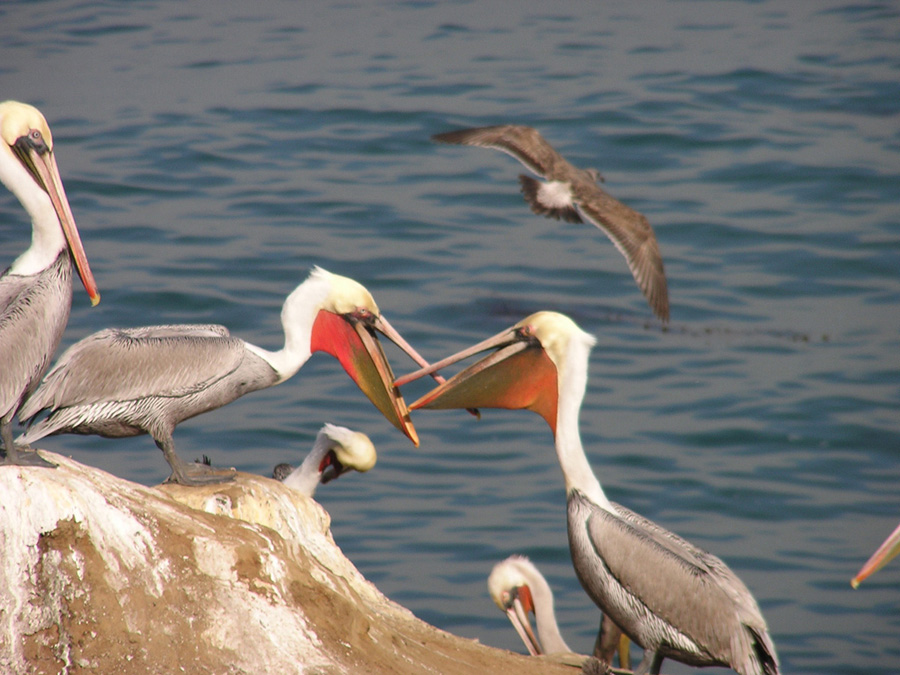
Let us take a closer look at the pouch as it strikes the water. The bill of the Brown Pelican consists of a long, narrow lower jaw formed by two flexible bones supporting a gular (throat) pouch of skin. The pouch expands rapidly as it submerges, bending the two lower bones outward to create a balloon. Fish are stunned by the impact and flow into the pouch with the rush of water but the pelican is cushioned by air sacs under its skin.
The lower jaw bones spring back to their parallel position fitting tightly against the upper bill as the pelican pops up to the surface, tips its head and bill forward letting the water drain out yet keeping the fish. Then it tosses its head back to position the fish head- first and swallows.
Back on land, the pouch, richly supplied with blood vessels, enables the pelican to dissipate body heat through gular fluttering especially during breeding displays when the throat becomes brightly colored. I have watched pelicans at a nesting site in La Jolla exercising this precious organ to maintain its elasticity. They throw the head back with the bill open, or tuck the head down and turn the pouch inside out over their folded neck and breast.
The unfledged young feed by pushing their head into the adults pouch to retrieve regurgitated fish. The pelican’s pouch holds about three gallons when fully distended while its stomach has a capacity of only one gallon. Ogden Nash was right about that.
Back to ... Mendocino Coast Audubon Society Newsletter Articles | | Home page